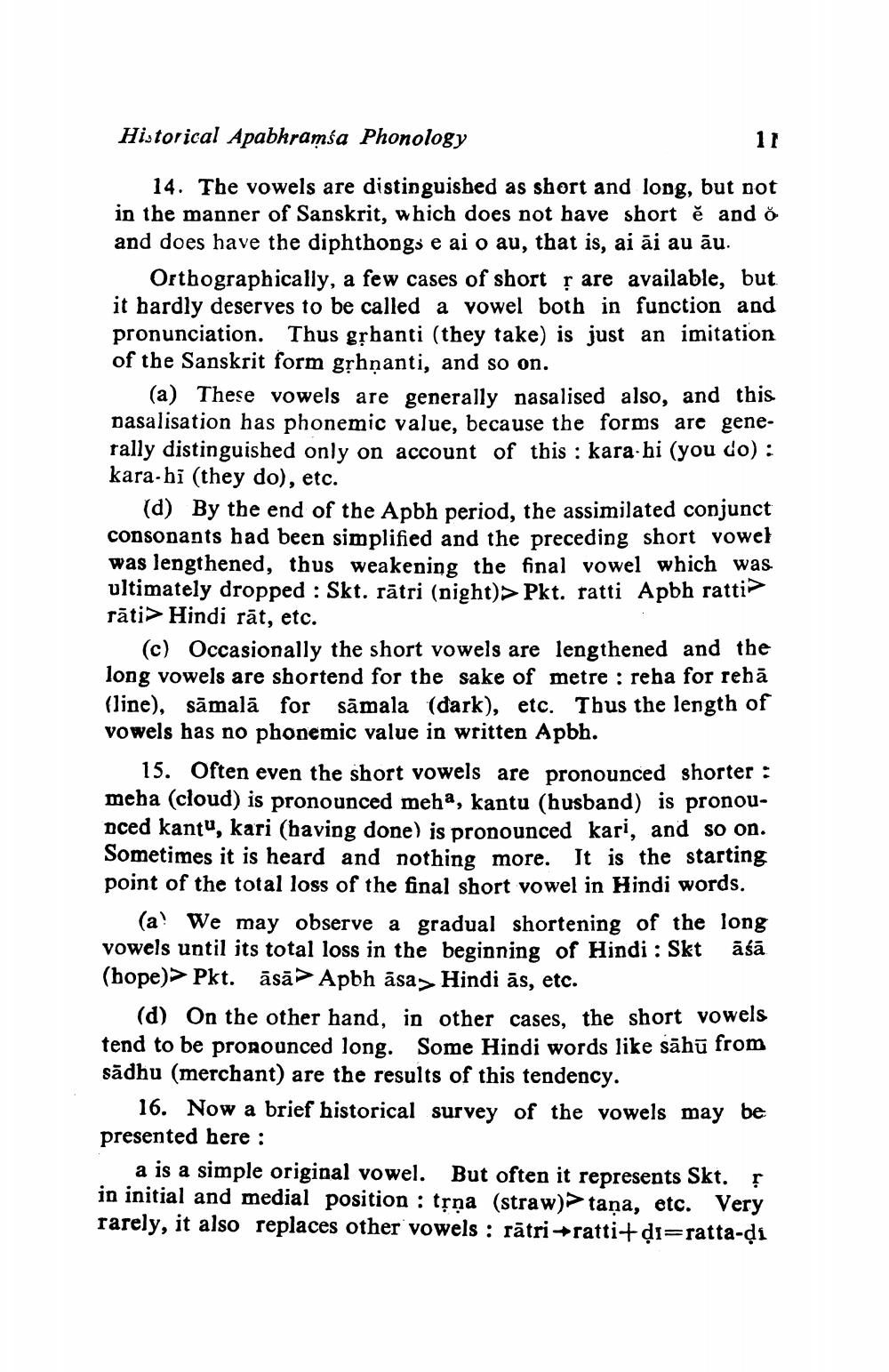________________
Historical Apabkramsa Phonology
11
14. The vowels are distinguished as short and long, but not in the manner of Sanskrit, which does not have short ě and o and does have the diphthongs e ai o au, that is, ai āi au au.
Orthographically, a few cases of short ș are available, but it hardly deserves to be called a vowel both in function and pronunciation. Thus grhanti (they take) is just an imitation of the Sanskrit form gļhộanti, and so on.
(a) These vowels are generally nasalised also, and this pasalisation has phonemic value, because the forms are generally distinguished only on account of this : kara-hi (you do): kara-bì (they do), etc.
(d) By the end of the Apbh period, the assimilated conjunct consonants had been simplified and the preceding short vowel was lengthened, thus weakening the final vowel which was. ultimately dropped : Skt. rātri (night)> Pkt. ratti Apbh rattirāti> Hindi rāt, etc.
(c) Occasionally the short vowels are lengthened and the long vowels are shortend for the sake of metre : reha for rehā (line), sāmalā for samala (dark), etc. Thus the length of vowels has no phonemic value in written Apbh.
15. Often even the short vowels are pronounced shorter : meha (cloud) is pronounced meha, kantu (husband) is pronounced kantu, kari (having done) is pronounced kari, and so on. Sometimes it is heard and nothing more. It is the starting point of the total loss of the final short vowel in Hindi words.
(a! We may observe a gradual shortening of the long vowels until its total loss in the beginning of Hindi : Skt āśā (hope)> Pkt. āsā Apbh āsa> Hindi ās, etc.
(d) On the other hand, in other cases, the short vowels tend to be pronounced long. Some Hindi words like sāhū from sādhu (merchant) are the results of this tendency.
16. Now a brief historical survey of the vowels may be presented here :
a is a simple original vowel. But often it represents Skt. s in initial and medial position : třņa (straw)>taña, etc. Very rarely, it also replaces other vowels : rātri +ratti+di=ratta-di




